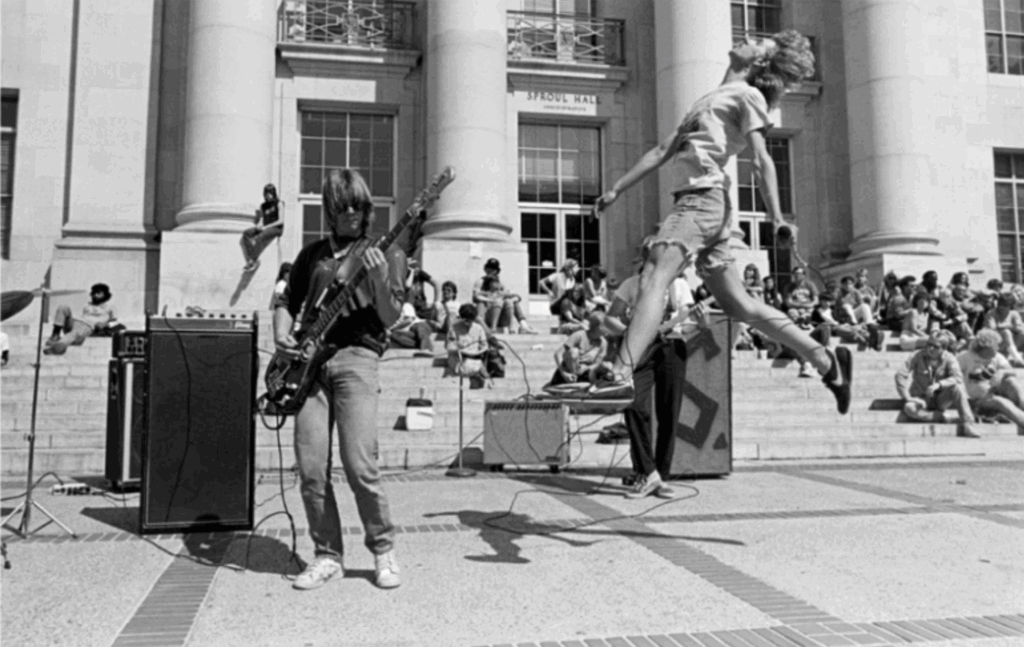Notes to John
By Joan Didion ’56

Joan Didion, who died in 2021, has a new book out, the first new writing since 2011. The material is taken from her archives, which together with husband and collaborator John Dunne’s papers, are now open to the public at the New York Public Library. To be specific, the book is drawn from a series of chronological notes, addressed to Dunne, that Didion made after each in a series of psychotherapy sessions beginning in 1999, when she was 65. Whether or not she wanted this journal published is an open question. And a moot one. Here they are.
Didion fans will find them revealing. While the voice is unmistakably hers, the journals have little of the cool detachment that so defined the Didion literary persona. Here the author is not so much crafting a narrative as simply reckoning with personal matters including motherhood and guilt, anxiety and depression, money and meaning. The notes were typed up when the advice of her psychiatrist, Roger MacKinnon, was still fresh in her mind, and his psychoanalytic insights are the glue that binds the notes together.
“You know what this entire session has been about, don’t you?” he asks at one point. No, said Didion.
“It’s about being forced to sum up. Looking at your life. Asking yourself if you’ve truly lived it. Asking yourself what you’ve really got to leave behind. This is something everybody has to face. It’s hard to face. But if you face it now, and make whatever changes you need to make, you’re going to have a shot at dying peaceful.”
—Pat Joseph
Hail Murray!
By Murray Bowles M.S. ’76. Edited by Anna Brown ’02, M.A. ’12
For a punk band in the Bay Area, being photographed by Murray Bowles was a rite of passage. As close friend Anna Brown told KQED after his death, “Finally getting into one of Murray’s pictures…meant that you were in.”
Unmistakable in his beard and wide-rimmed glasses, Bowles was a ubiquitous fixture, not just at the punk scene, but in it—most likely in the middle of the crowd, camera raised overhead. Looking at his images, which spanned four decades and captured the likes of Green Day and Rancid, you can practically hear the raw wailing of guitars and feel the frenetic collisions of sweaty bodies in the mosh pit. So iconic was Bowles that he even made an appearance on the cover of Green Day’s album Dookie.
Six years after his death at age 68, hundreds of Bowles’ photos have been compiled for the first time in Hail Murray!: The Punk Photography of Murray Bowles, 1982-1995. The collection features everyone from Operation Ivy to Crimpshrine and the Dead Kennedys, in intimate living room jams and concerts on Sproul Plaza. Stark in black and white, his photos are an ode to the raw energy and passion of the punk scene—and a counter to the narrative that punk was all moshing and violence. Though that was also present.
“Capturing people having fun is always fun,” Bowles said in a 2010 interview with Maximum Rocknroll.
“There was this real public perception of punk violence, moshing, and danger. It’s nice to show it can be both ways. It can be fun to be violent.”
—Leah Worthington
How to Eat Weed & Have a Good Time
By Vanessa Lavorato ’10

From Vanessa Lavorato, maven of marijuana cookery comes this colorful guide to cooking with cannabis and—this is the important part—having a good time doing it. Thank Jah for that, because as many a soul can tell you, eating weed can go very, very badly if you’re not attentive to the dosage and other details. Lavorato, current host of the “stoner-at-a-stove cooking show” The Edibles Club and formerly co-host of VICE TV’s Bong Appétit, is nothing if not attentive as she schools readers on everything from terpenes and flavonoids to decarboxylation rates and dosage calculations.
Recipes include sweet takes on old classics like Fudgy Fluffernutter Brownies, savory dips like Hemp Hummus, and even weed-infused cocktails. Pot-a Colada, anyone? Lavorato also advises on how to thoughtfully plan a pot party dinner menu (“spark appetites with dosed appetizers” but “keep entrees sans weed”), the importance of cleaning up and clearly labeling containers (lest you play “a round of edible roulette”), and what to do if/when someone overdoes it (stay calm, call 911 if necessary). Which should be all the reminder you need that cannabis, while it is now legal in most states, is still a drug. Which is to say, powerful medicine. Treat it with respect. And have a good time.
—P.J.
Every Peach Is a Story: A Picture Book
By David Masumoto ’76 and Nikiko Masumoto ’07

If there’s to be a book on peaches, David “Mas” Masumoto and his daughter Nikiko Masumoto are the undisputed choice to write it. On their 80-acre organic Masumoto Family Farm near Fresno, founded in 1948 and farmed sustainably long before it was fashionable, they grow peaches so luscious they’ve appeared by name on menus at famed institutions including Berkeley’s Chez Panisse, Napa Valley’s The French Laundry, and New York’s Per Se.
But it wasn’t always this way. In the 1980s, amid a farm crisis of high interest rates, plummeting crop prices, and debt, American agriculture shifted toward hardier fruit that was bred for shelf life. Mas’s heirloom Suncrest peaches, to his dismay, were then deemed too fragile for the mainstream market. With hundreds of boxes sitting unsold in cold storage, Mas, rather than grubbing up his trees, sat down to write Epitaph for a Peach, a plaintive Los Angeles Times essay asking why on earth “no one wants a peach variety with wonderful taste.”
His call for sustainability and flavor made him an early hero of the then-burgeoning local food movement. By the early 2000s, after several books and accolades, it was clear: Everyone wanted his peaches. Nikiko, who later joined the family business, realized just how revered their fruit had become the day she was served dessert at Chez Panisse: a single, perfect Masumoto peach on a plate.
Now the Masumotos have turned their fruit lore into a debut children’s book. Every Peach Is a Story, illustrated by Lauren Tamaki, follows little Japanese American Midori and her jiichan (grandfather) as they search their family orchard for a perfect peach. “It’s ripe,” he tells her, “when it tastes like a story.” The story, of course, is not just about the velvety fruit, but about their ancestors’ resilient journey—and Masumoto’s.
—Nathalia Alcantara






















